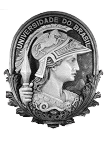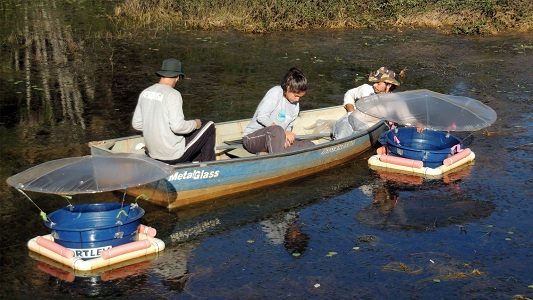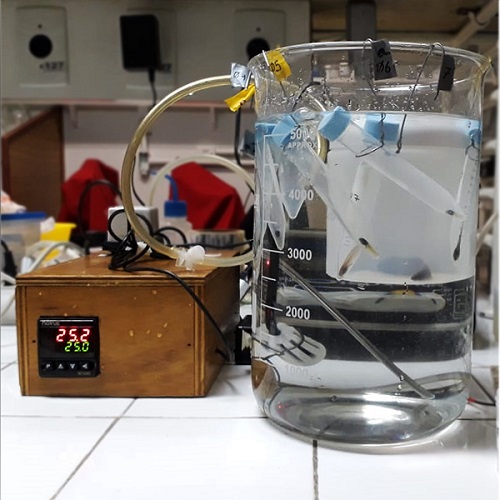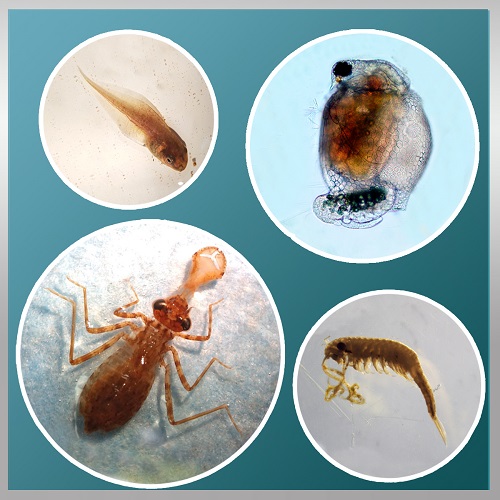Physiology and Population Dynamics of Aquatic Organisms
The abundance of a population can be affected by abiotic factors (physical and chemical attributes of the environment) and by the interactions with other organisms (predation, competition, etc.). Abiotic factors, such as temperature, affect populations at the individual, physiological level, by influencing organism metabolism and the way they allocate energy to vital functions, such as reproduction and growth. Here we study the effect of natural and anthropogenic stressors upon physiology and population dynamics of aquatic organisms. This is done mainly through field and laboratory experiments.
One of the highlights are the studies with crustaceans of the Branchiopoda class, which includes cladocerans (e.g., genera Moina and Ceriodaphnia) and the “Camarões-fada” (order Anostraca) as model organisms. These short-lived organisms (max 2 months life cycle) allow for experimentation covering all life cycle, which examines reproductive parameters, corporeal growth and longevity. Considering the different stages in the life cycle of the microcrustaceans, the role of the banco de ovos de resistência in the colonisation of temporary aquatic environments is remarkable. This is experimentally addressed by exposing the distinct dormant stages to different abiotic stress and to dehydration periods, aiming to understand the requirements for eclosão and subsequent colonisation of these environments.
We are also interested in ecological gradients, such as the one found for the concentration of dissolve organic carbon (DOC). We found that mild stress caused by humic aquatic compounds could increase longevity and resistance to other stressors in cladocerans. These results are evidence of the important role of these substances, which are present in nearly all aquatic environments as main components of DOC. Moreover, given the low nutritional quality of alloctonous sources, some of our studies aim to investigate the nutritional sources (through the biochemical composition) of species present in DOC-rich small wetlands.
Ongoing global climatic changes turn relevant studies on the physiology of aquatic organisms, such as those related to tolerance and metabolic changes of amphibians and macroinvertebrates to temperature increases. These studies help define critical thermal thresholds for various species and therefore indicate groups potentially threatened by climate change.






